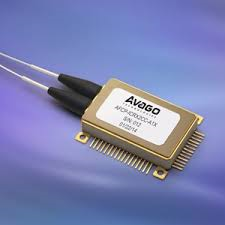
Deployment of 100G coherent technology might seem futuristic, but it is entirely realistic to attain and implement into our daily tech lives, allowing a 100G range of data to be shuttled along great distances over a single wavelength. This 100G system has a rapid rate of response and an extremely overall low rate of power consumption. Karen Liu, principal analyst at Ovum, specified that “100G coherent technology is absolutely the key building block for transport networks, and not just for 100G deployments today but into the future. A very important part of the value of this one technology is that it spans 100G metro to 400G long-haul, and all those applications demand ever smaller size and greater functionality.” Liu understands that “the entire network infrastructure from metro to core is racing to keep up with traffic growth.”
To prepare for 200G/400G long-haul, Avago Technologies has provided a solution. Avago’s AFCP-ICRX2CC can link the technologies during times of change when previous equipment is being phased out and newer innovations are applied. Avago Technologies recently announced its latest addition to its line of coherent receivers; the AFCP-ICRX2CC is a phase-shift coherent receiver that can help with this tech transformation. The AFCP-ICRX2CC is a polarization-multiplexed quadrature phase-shift coherent receiver, measuring one third the size of previous models. This receiver is made up of an integrated input monitor photodetector, four 25-Gbps balanced detector pairs, a variable optical attenuator (VOA), and two matched 90° optical hybrids. The unit also contains polarization splitters for signal and local oscillators and four differential linear transimpedance amplifiers (TIAs) with manual and automatic gain control in the overall surface-mount package. Liu explained that “Avago's receiver addresses a timely need as 100G metro-optimized and 400G long-haul systems come to market this year.”
Avago’s AFCP-ICRX2CC delivers an impressive dynamic range and improved optical signal-to-noise ratio (OSNR) for both single and multi-channel signals. For applications that feature multiple coincident signals, this aspect performs much stronger optical input power than when single-channel tasks are being carried out. The variable optical attenuator utility bolsters the control features of the input signal into the TIAs. What’s more, with the incredible design of the external local oscillator, there is no need for external optical filters that offer system operators flexibility; this, in turn, decreases the system’s overall cost.
The AFCP-ICRX2CC optical receiver adheres to the Optical Internet Working Forum (OIF) implementation agreement OIF-DPC-RX-01.2. The specifications encompass a baud rate up to 32 GBd and a high input dynamic range: THD of 0.5% at 3 mApp. There is also a signal attenuation range of 10 dB, and no active temperature controls are required. It is available for C-Band, L-Band, and C+L-Band, and works from the temperature range of -5° to +80°C.
Stefan Rochus, Avago Technologies’ director of optical components product marketing, stated that “leveraging Avago's in-house InP and silica-on-silicon technology platforms and highly automated, sub-micron precision assembly platforms, we have delivered the highest level of integration and smallest footprint for our second-generation PM-QPSK coherent receiver.” He went on to explain how “this demonstrates Avago's continued commitment to advancing our coherent receiver technology to address the 100G metro and emerging 200G/400G long-haul network applications.”
Avago Technologies’ AFCP-ICRX2CC is slotted to be available for the general public this July.
Story via Avago Technologies, Lightwave Online
Advertisement
Learn more about Avago Technologies





